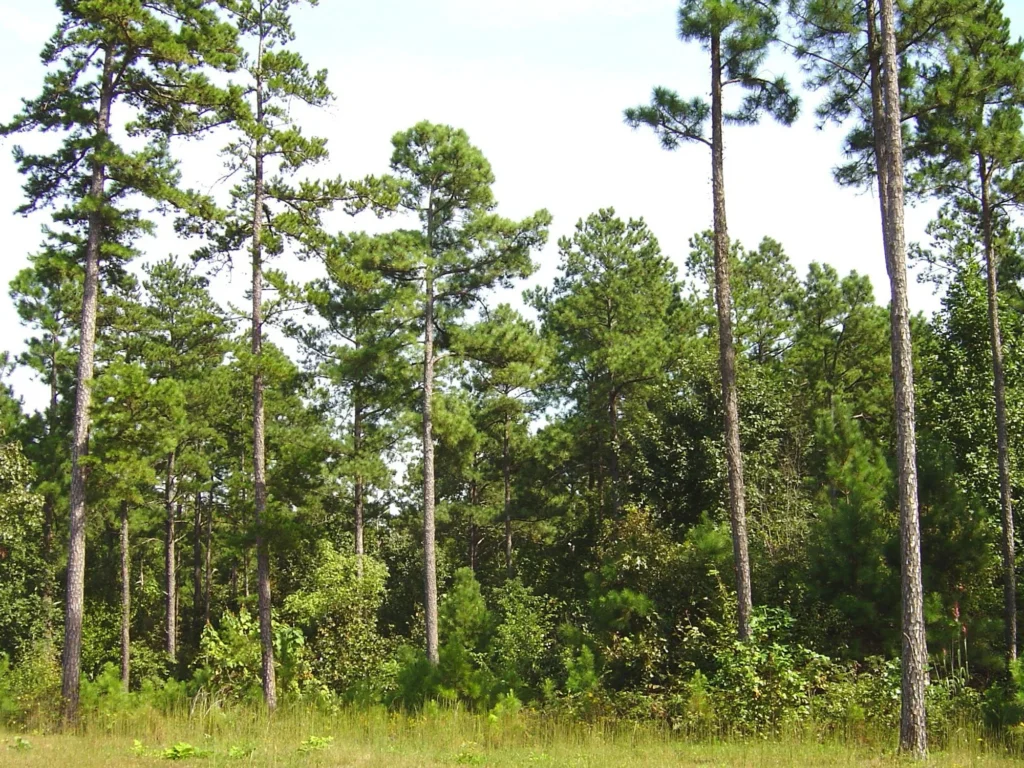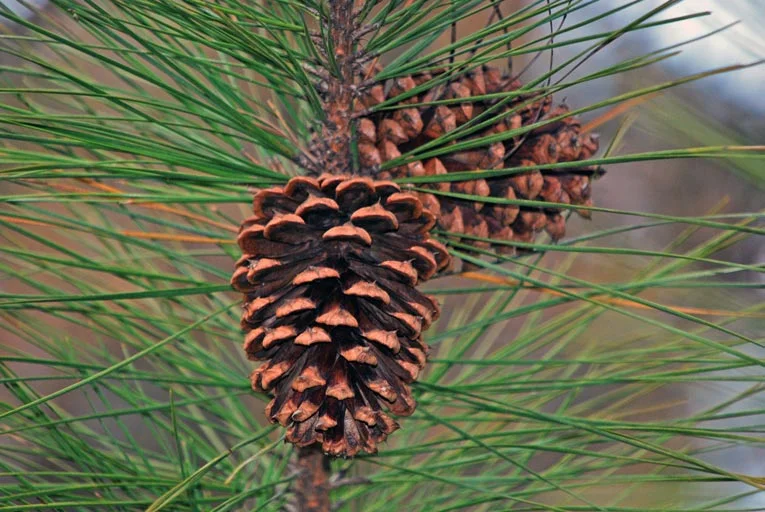What is the state tree of Arkansas?
The official state tree of Arkansas is the Loblolly Pine, a Scientific named Pinus taeda. This magnificent coniferous tree, with its tall stature and distinctive needles, is Also known as the Arkansas Pine, the Loblolly Pine is celebrated for its economic, ecological, and cultural significance.
The selection of the Loblolly Pine as Arkansas’ state tree was made official in 1939. Its designation was a testament to the tree’s importance in the state’s forestry industry and its prevalence in Arkansas’ natural landscapes.
The decision to honour the Loblolly Pine was also influenced by its adaptability to the state’s climate and soil conditions, making it a vital component of Arkansas’ ecosystem.
Loblolly pine
The Loblolly Pine, scientifically known as Pinus taeda, is a species native to the southeastern United States, thriving in the warm and humid climate of Arkansas. Renowned for its impressive size and rapid growth, the Loblolly Pine often reaches heights of 90 to 110 feet, with diameters ranging from 2 to 4 feet. Its straight trunk and dense foliage create a commanding presence in the forests that blanket the state.
One of the defining features of the Loblolly Pine is its distinctive needles, which grow in clusters of three and can measure between 6 to 9 inches in length. These evergreen needles provide year-round colour to Arkansas’ landscapes, offering shelter and sustenance to a diverse array of wildlife, including birds, mammals, and insects.
The life cycle of the Loblolly Pine is a testament to nature’s resilience and renewal. The tree typically begins producing cones, or “pine cones,” at around 15 years of age, with peak seed production occurring between 25 to 60 years. These cones contain seeds that are dispersed by various means, including wind, birds, and mammals, facilitating the regeneration of Loblolly Pine forests across Arkansas.

Etymology and taxonomy
The term “loblolly” is a fusion of “lob,” denoting the thick, heavy bubbling of cooking porridge, and “lolly,” an archaic British dialect term for “broth, soup, or any other food boiled in a pot.” In the southern United States, it is used to describe “a mudhole; a mire,” stemming from an analogy to the consistency of porridge. Thus, the pine earned its name as it typically thrives in lowlands and swampy areas. Loblolly pines flourish in acidic clay soil, prevalent throughout the South, hence their abundance in expansive stands within rural landscapes.
Historically, the species has been known by several other names, albeit now seldom used.
- “Oldfield pine” reflects its propensity for colonizing abandoned fields in the early stages of forest succession.
- “Bull pine” was attributed to its imposing size, a moniker shared with other sizable yellow pines, particularly when found as large, solitary specimens.
- “Rosemary pine” highlights loblolly’s unique fragrance in comparison to other southern pines.
- “North Carolina pine” denotes its prevalence in the region.
Regarding its scientific nomenclature, “Pinus” derives from Latin, representing the genus encompassing various pine species, while “taeda” alludes to the resinous nature of its wood.
Why was the specific tree chosen as the state tree of Arkansas?
The specific tree chosen as the state tree of Arkansas is the Pine Tree, or more specifically, the Loblolly Pine, which was selected as the state tree due to its abundance and economic importance to the state.
Loblolly Pine forests cover vast areas of Arkansas and have been a significant natural resource for the state’s timber industry.
The tree’s resilience, rapid growth, and adaptability to various soil types make it a valuable asset for both; commercial purposes and the state’s ecosystem.

What are the characteristics of the Arkansas state tree?
The Arkansas state tree, the Loblolly Pine, possesses several distinctive characteristics:
- Height and Appearance: Loblolly Pines are tall, straight trees that can grow up to 100 feet or more in height. They have a narrow, conical crown with branches that extend outward in regular intervals.
- Needles: The needles of the Loblolly Pine are long and slender, typically ranging from 6 to 9 inches in length. They grow in bundles of three and have a dark green colour.
- Cones: The cones of the Loblolly Pine are cylindrical and typically measure around 3 to 6 inches in length. They mature in the late summer or fall and release their seeds shortly thereafter.
- Bark: The bark of young Loblolly Pines is smooth and greyish-brown, while mature trees develop thick, furrowed bark that is reddish-brown to grey.
- Habitat: Loblolly Pines are well-adapted to a variety of soil types and can thrive in both upland and lowland habitats. They are commonly found in the southeastern United States, including Arkansas, where they often dominate the landscape in pine forests.
- Economic Importance: Loblolly Pines are highly valued for their timber, which is used in construction, paper production, and various other applications. The timber industry plays a significant role in the economy of Arkansas, making the Loblolly Pine an economically important species for the state.
- Ecological Role: In addition to their economic importance, Loblolly Pines provide habitat and food for various wildlife species. They also help stabilize soil, prevent erosion, and contribute to the overall health of forest ecosystems.


